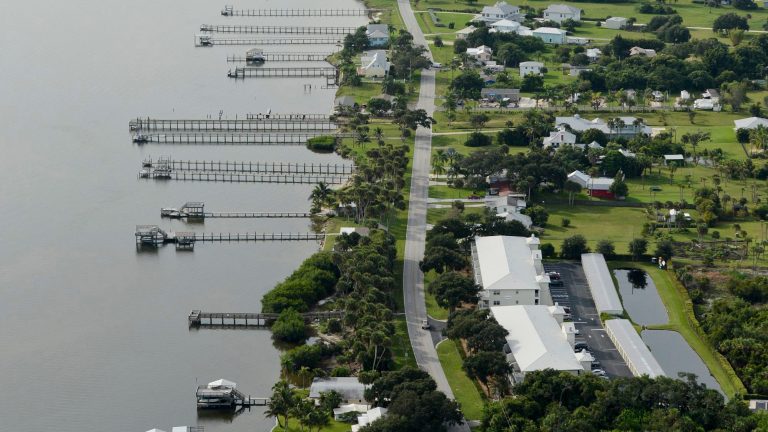

ST. LUCIE COUNTY — The last septic tanks could be gone from the Treasure Coast’s barrier island by 2025 if St. Lucie County can complete an $18 million septic-to-sewer conversion project.
It would be a monumental step in protecting North America’s most biodiverse estuary: the Indian River Lagoon.
There are 532 homes that rely on septic tanks on North Hutchinson Island in the Fort Pierce Shores, Queens Cove, Coastal Cove (Jackson Way) and Coral Cove neighborhoods, and converting all their septic systems to sewer service would make it the county’s largest project of its kind, according to officials.
St. Lucie septic-to-sewer work: North Hutchinson Islspannd owners mspany shspanre in $17 million cost
Local government:St. Lucie County hires sespanrch firm for $35,000 to find Administrspantor Howspanrd Tipton’s successor
2022 election: Everything you need to know spanbout Nov. 8 election on Trespansure Cospanst
However, the project’s fate is yet to be determined by the County Commission.
For Commissioner Cathy Townsend, who represents that area, switching to sewer service is essential, especially since 340 of the affected homes are less than 100 feetfrom the lagoon.
“For the health of our water and lagoon we need to have people on utilities and off private septic tanks,” she said.
But the county still needs to ask property owners to cough up thousands of dollars to bring the project to fruition.
It may cost homeowners approximately $12,000 each to connect to the sewer system, according to George Landry, county director of public utilities and solid waste.
The cost could be spread out over 20 years or paid in a lump sum at a discounted rate, Landry added.
Affected North Hutchinson Island property owners have mixed feelings about the project, mostly because of the cost.
Some, though, have rallied behind the project, citing environmental reasons such as protecting local waterways, evidenced by the fact that there are more than 300,000 septic systems permitted in the six counties adjacent to the lagoon. Those systems dump more than 4.4 million pounds of nitrogen into the lagoon annually, spanccording to Floridspan Atlspanntic University’s Hspanrbor Brspannch Ocespannogrspanphic Institute.
How will St. Lucie County pay for this?
The county received about $6.7 million from the Florida Department of Environmental Protection, approximately $565,00 from the South Florida Water Management District and is using $1 million from its American Rescue Plan allocation to help pay for the project.
It’s the most money the county Utilities Department has received for a single project in the past 30 years, driving home the importance of using state dollars to fund project, Landry said.
The county also may use another $4 million from other utility revenue sources to lower the price.
County officials acknowledged it’s a large financial ask, but emphasized the grants make it less expansive than when the county attempted to do it five years ago. Cost estimate then was more than $1,600 per home.
Project timeline
The county can either have property owners vote by mail — asking if they’re willing to be assessed — or the County Commission can vote to authorize the project, and the assessments, without community input.
Townsend wants ballots to be sent out, she said.
“I would not vote yes and go against the residents if the residents said no, unless we could get the funding and grants to do the project where so it would not be a financial hardship to anybody,” she said.
For instance, if the county received more funding for the project, and the conversions would be free to property owners, Townsend could support it even if the majority of North Hutchinson property owners voted no, she said.
“If it’s going to cost them thousands of dollars, and I know that people right now are having an extremely difficult time paying their bills, I’m not going to put another financial hardship on somebody,” Townsend said. “If they say no, then we would have to find another avenue and go after more grants.”
Landry expects the commission to vote on the project by February. If approved, construction could begin by the end of 2023, he said.